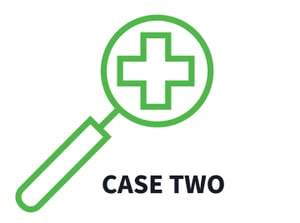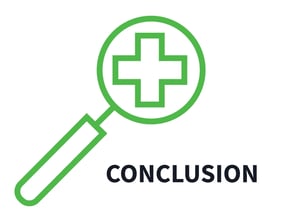
Medical Assistants:
Delegation, Supervision, and Vicarious Liability
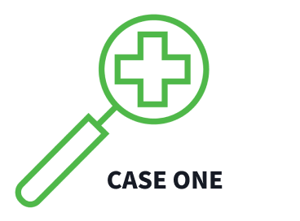
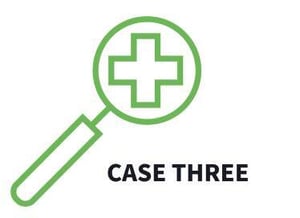
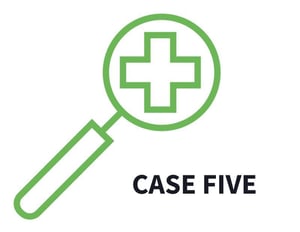

Mary-Lynn Ryan, JD, CPHRM,
Senior Risk Management Consultant
Ms. Ryan began her professional career in medical liability defense litigation; was then a staff attorney at the California Medical Association; and prior to its acquisition, was a Risk Manager at NORCAL. In addition to providing risk reduction services at ProAssurance, she teaches Legal Issues for New Dentists at the University of MN School of Dentistry. Mary-Lynn obtained her JD from Pepperdine, and she is licensed to practice law in California. She has a Graduate Certificate in Health Ethics.

Introduction
Medical assistants (MAs) can increase patient satisfaction and healthcare quality, which are important aspects of malpractice liability risk reduction. But MAs can also increase liability risk for their supervising clinicians. Employers of MAs may be found vicariously liable for MAs’ negligent actions and may also be directly liable for negligent supervision, delegation, hiring, and training. Additionally, MAs who exceed their scope of practice to the degree that they are practicing medicine (or nursing) can expose the person delegating tasks to charges of aiding and abetting the unlicensed practice of medicine (or nursing). This can result in board discipline and, although rare, criminal prosecution.
Determining an MA's scope of practice can be complicated. Some state laws list what MAs can and cannot do, which makes scope of practice determinations more straightforward. Other states are vague or silent on the issue. Such ambiguity is often at the root of unintentional delegation of tasks beyond an MA's scope.
While allegations in malpractice lawsuits involving MAs vary, an analysis of ProAssurance closed claims revealed these common themes:
- Clinicians inappropriately delegated MA's tasks, which either were or were not outside the MA scope of practice, but were beyond their capabilities.
- MAs intentionally violated policies and protocols designed to appropriately limit the MA scope of practice.
- MAs either intentionally or unintentionally failed to follow guidelines, manufacturer recommendations, or practice protocols.
Providing safe and lawful patient care when utilizing MAs requires teamwork. Administrators and the clinicians who supervise MAs must create MA policies and protocols that are consistent with state laws and regulations. Clinicians must be familiar with scope of practice laws and their MA’s competency to ensure MAs are only delegated appropriate tasks. Administrators and clinicians must regularly assess each MAs competency and compliance with the MA scope of practice. Finally, MAs must know their scope, work within it, and have the confidence and clinician support to refuse tasks that are outside of their scope or beyond their level of competence. These are the basic elements of a patient safety/risk reduction program for practices that use MAs.
The case studies in this article are based on malpractice claims. The risk reduction strategies that follow each case are offered to create a multimodal risk reduction approach that includes using tools to define and contain MA's duties; providing education on scope of practice for MAs, delegating clinicians, and office managers; regularly reiterating scope of practice; and reassessing each MA's job duties and expertise as they expand and develop.

 CASE ONE:
CASE ONE:
Vicarious Liability for MA Errors
In general, vicarious liability allows an injured patient to hold a third party (e.g., an MA’s employer) financially responsible for the negligence of the person who caused the injury (e.g., their MA). In malpractice litigation, vicarious liability is most frequently associated with an employment relationship. To be found vicariously liable, the employer need not do anything wrong. For example, if an employer appropriately hires, trains, supervises, and retains an MA, but the MA still causes a negligent patient injury, the propriety of the employer’s management of the MA will not shield the employer from vicarious liability.
In many medical malpractice actions involving patient injuries caused by an MA, the plaintiff’s attorney will simply name the employer of the MA as a defendant instead of naming the MA. Although the attorney must prove the MA’s negligence caused or contributed to the injury, the attorney will seek damages via a vicarious liability claim against the employer.
As you read through the facts of this case, think of what the family practice physician (FP) could have done to prevent the patient injury.
An FP owned a practice that employed several MAs. The FP had been prescribing warfarin 2 mg per day to an elderly patient for many years. The patient called the office one day and spoke to an MA. He requested a refill of warfarin 10 mg. The MA did not review the patient’s record (which was counter to office policy and her MA training) to verify what strength of warfarin the patient was taking. She called in the 10 mg prescription to the pharmacy, which filled it. The patient took 10 mg warfarin daily for two weeks, which caused a gastrointestinal bleed requiring surgery, multiple hospitalizations, and extensive rehabilitation.
The patient sued the FP’s practice alleging vicarious liability for the MA’s negligence.

Medication errors are common in malpractice claims involving MAs. In this case, the FP/practice owner did not believe that the practice should have been named in the lawsuit, because his MA independently caused the medication error. However, as the MA’s employer, the practice could be held vicariously liable, regardless of the FP’s own actions.
The defense team believed it would be very difficult to defend the vicarious liability claims against the FP’s practice. The MA was an employee of the practice. The MA’s failure to check the correct dosage before calling in the prescription was considered negligent by the experts, the FP, and the MA herself. The MA’s error caused the patient’s injuries. Proving the elements of vicarious liability would be straightforward.
According to the MA, if she had cross-checked the request for a 10 mg dosage with the order in the patient record and noted it was different, she would have then called both the patient and the FP to confirm the difference in dosage was appropriate. In other words, it is likely that this injury would not have occurred if the office protocol had been followed.
Cross-check protocols were in place to catch exactly this type of error. Unfortunately, there were no redundancies in this system, which essentially allowed the MA to independently control anything categorized as a refill. The same error could have occurred due to a simple typo. The MA admitted she was previously trained during school and at the FP’s office to always cross-check the requested refills with the prescription from the physician in the patient file. It is also likely that this was not the first time the MA failed to cross-check a requested refill. However, because neither the FP nor the office manager was monitoring the MA’s compliance with office medication refill protocols, and the system was not flagging refill inconsistencies, there were limited opportunities to prevent this type of error.
 |
Because vicarious liability is common in an employer-employee relationship, taking steps to decrease the risk of employee-related harm to patients is essential. Consider the following strategies:1
|
ADDITIONAL RESOURCE:
ProAssurance: Employee (Unlicensed) Skills Test4
Sample form to facilitate the creation of a practice-specific checklist to assess the competency of MAs

 CASE TWO:
CASE TWO:
Lack of Supervision
In the following case, the MA had worked with the primary care physician (PCP) for many years, and the physician did not feel the need to assess the MA’s injection skills. However, the unchecked autonomy resulted in a patient injury and inadequate medical record documentation, which complicated the defense of the claim.
Think of the ways your office supervises MAs. Do you have processes in place that could have prevented this patient injury?
A 30-year-old male patient presented to his PCP’s office complaining of a skin rash. After examination, the PCP told the MA to give the patient a triamcinolone shot. The MA administered the injection into the right buttock. Four months later, the patient noticed an indentation and depigmentation in the area near the injection site. He consulted with a plastic surgeon, who told him he would need several procedures to resolve the indentation. The patient sued the PCP, alleging negligent supervision of the MA, vicarious liability for the MA’s negligent injection, and lack of informed consent.

The MA, who was a long-time employee of the PCP, had given countless injections of all types over the years. He had learned to give injections under the observation of his former employer. The PCP never independently assessed the MA’s injection skills, assuming his competence. The expert reviewers in this case, however, believed the MA did not inject the triamcinolone deeply enough into the muscular tissue. It likely only reached the subcutaneous level, which caused damage to the superficial tissue surrounding the injection site. Since the PCP had never observed the MA’s injection technique and had never provided the MA with training, he had difficulty answering questions about whether the MA was competent.
The lack of documentation further complicated the defense. The MA failed to note the injection technique or location. Regarding informed consent, the MA documented “RBAs discussed.” It was unclear who obtained the informed consent, and which risks were discussed. The patient denied being advised of any risks, and further claimed he would not have consented to the injection if he had known it could cause subcutaneous fat atrophy.
 |
Initial and ongoing skills competency assessments can decrease the risks of errors due to an MA’s lack of knowledge or incorrect techniques.5 Consider the following strategies:
|

 CASE THREE:
CASE THREE:
Aiding and Abetting the Unlicensed Practice of Medicine
The line between what an MA can and cannot do is often subtle, but if MAs perform duties that are supposed to be performed by licensed individuals only, then they are operating outside the appropriate boundaries of their position. “Practicing medicine” without a license is a crime. Delegating medical tasks to an MA can be “aiding and abetting” the unlicensed practice of medicine, which can result in criminal prosecution, professional board discipline, and civil penalties.
Think about the services provided by the MAs in your office. Could they be considered medical practice?
A general surgeon decided to expand her practice to include laser hair removal, which would be performed by her certified medical assistant (CMA). She attended a seminar to obtain training. She and her CMA received additional training from the laser equipment company. Consistent with what she had learned in the training, the surgeon’s plan was to set the parameters for the laser for each patient, then rely on the CMA to perform the procedure. One afternoon, following the parameters that had been set by the surgeon, the CMA performed facial hair removal on a 30-year-old woman. The patient developed permanent scarring and hyperpigmentation. She filed a malpractice lawsuit against the surgeon and reported her to the medical board for aiding and abetting the unlicensed practice of medicine.

Which tasks can be appropriately delegated to MAs vary due to differences in state laws and regulations. In addition, some states regulate MAs very specifically and have detailed statutes and regulations outlining supervision requirements and the services an MA may perform. Some states specifically regulate laser use. Other states’ statutes and regulations make no mention of lasers or what tasks MAs can perform. In states with no laws or regulations specifying MA scope of practice, it is helpful to determine those tasks that statutes and regulations specifically describe as the practice of medicine, nursing, or other licensed profession. Those tasks would be outside of an MA’s scope of practice. Even if not mentioned in a statute or regulation, tasks that require an MA to exercise independent professional judgment, or make clinical assessments, evaluations, or interpretations, would be outside of the MA scope of practice.6
The surgeon in this case did not check whether her state defined laser hair removal as the practice of medicine—it clearly did. The combination of the state law and the undisputed evidence that the medical assistant used the laser on the patient at the direction of the physician made this a case that was difficult to defend. The surgeon was disciplined by the medical board, and the malpractice case was settled.
 |
Consider the following strategies:
|
ADDITIONAL RESOURCES
American Association of Medical Assistants (AAMA): MA State Scope of Practice Laws7
Links to MA scope of practice laws in many U.S. states and AAMA general counsel opinion letters about delegable duties in states without specific MA scope of practice laws
Federation of State Medical Boards: Use of Lasers/Delegation of Medical Functions8
State-by-state overview with links to regulations and statutes

 CASE FOUR:
CASE FOUR:
Providing Medical Advice
A simple desire to be helpful or make conversation can result in an MA giving and a patient accepting their advice. In the following case, the MA inadvertently discouraged a patient’s mother from bringing her child in for an evaluation.
Consider which processes you have in place to ensure MAs are not providing medical advice to patients.
An MA in a pediatrics office answered a call from the mother of an 18-month-old patient. The mother explained that her child had a 103o temperature, was vomiting, and was very irritable. Many children had presented to the office with similar symptoms within the past week, and the pediatricians and nurses had been discussing the probability that a virus was going around. The MA’s child had recently suffered from similar symptoms, which she treated with infant ibuprofen. Her child’s symptoms had resolved a few days later. The MA shared this information with the patient’s mother and then asked if the mother was interested in scheduling an appointment. The mother, assuming her child had the same virus the MA described, and consequently believing the symptoms could be treated with over-the-counter medication, declined the appointment. Unfortunately, the child had pneumococcal meningitis. Delayed treatment resulted in blindness, seizures, and cognitive delays. The parents brought a lawsuit against the MA and pediatrics practice alleging negligent delay in the diagnosis of meningitis.

The MA did not equate her conversation with the patient’s mother with providing medical advice. However, experts believed the MA was negligent, and the negligence was a cause of the patient’s injuries. It was likely the pediatric practice, as the MA’s employer, would be found vicariously liable for the delayed diagnosis of meningitis.
 |
As this case indicates, rendering medical advice can be inadvertent. But friendly conversation can result in devastating patient injuries. Discussing patient symptoms over the telephone can be particularly tricky because, unless informed, the caller won’t know the qualifications of the person who has answered the telephone. And even if the MA identifies their position, the caller may not know that providing medical advice is outside of an MA’s scope of practice. Consider the following strategies:
|
ADDITIONAL RESOURCE
ProAssurance: 2 Minutes: What’s the Risk? Staff Competencies9
Guidance on the process of checking and documenting clinical staff competencies

 CASE FIVE:
CASE FIVE:
Disagreement About MA Scope of Practice
Effective communication about appropriate delegation is an essential component of safe medical practice. The following case study highlights the risks that can arise when a supervising physician delegates tasks to MAs without ensuring clarity around scope of practice.
Consider whether the MAs in your office would feel confident confronting you when a task you delegated was beyond their scope or comfort level.
A 50-year-old woman presented to an urgent care clinic complaining of shortness of breath and headache.She was seen by a physician, who ordered an MRI of the brain and a chest x-ray. The MRI was negative, and the patient was ultimately diagnosed with a cluster headache. The physician prescribed sumatriptan and told the patient to follow up with her PCP within the next few days.
Five days later, the urgent care physician received the chest x-ray report from the radiologist, who identified a nodule or infiltrate in the patient’s left lung. The urgent care physician instructed his MA to contact the patient regarding the study and the need to follow up with her PCP. The urgent care physician assumed that the MA would tell the patient there was an abnormality on the chest x-ray. However, the MA felt that advising patients about abnormalities on radiographic studies was not within her scope of practice as an MA. Consequently, the MA urged the patient to follow up with her PCP but said nothing about the results of the chest x-ray. The patient did not follow up with her PCP because her symptoms resolved.
When the patient next presented to her PCP a year later, it was for a routine physical. He noticed the chest x-ray in the EHR and informed her of the abnormal results. Shortly thereafter the patient was diagnosed with unresectable Stage III squamous cell carcinoma of the left lung.
The patient filed a malpractice lawsuit against the urgent care clinic, urgent care physician, and MA, alleging the delayed diagnosis significantly reduced her chance of successful treatment. (Her experts opined that she likely had Stage I lung cancer when the radiologist first noticed the nodule.)

Experts believed that the call about the findings on the x-ray should have come from the urgent care physician, so the patient would understand the significance of them and the need to follow up. Alternatively, experts believed the diagnosis could have been made earlier if the urgent care physician had directly communicated the results to the patient’s PCP—even though the results were available to the PCP in the EHR. The issue of whether it was beyond the MA’s scope of practice to read the x-ray results to the patient was never resolved. The case took place in a state that did not have any laws describing the scope of practice for MAs. Regardless of the scope of practice disagreement, the urgent care physician was both directly and vicariously liable for the failed communication because the MA was employed by him and under his supervision. Due to negative standard of care and causation reviews, the claims against the urgent care physician, urgent care, and MA were settled.
 |
Consider the following strategies:
|

Conclusion
The line between what an MA can and cannot do is often subtle. However, failure to consider, define, and monitor an MA’s scope of practice can increase the risk of patient injury, professional liability lawsuits, and medical board disciplinary actions. Knowing the laws and regulations that apply to the MA scope of practice in your state is the first step toward complying with the laws. In addition to appropriate delegation policies and procedures, an MA’s competence to perform a delegated task must be initially assessed and then reassessed on a regular basis. Effective communication, supervision, and training among administrators and healthcare team members—based on thorough, workable policies and procedures—can further diminish the liability and patient safety risks MAs can introduce into healthcare settings. Applying the risk reduction strategies proposed in this publication can potentially minimize the incidence of adverse outcomes and increase the probability of successfully defending malpractice claims should they occur.
Endnotes
Many risk management resources and past editions of Claims Rx are available on the ProAssurance website, by calling Risk Management at 844-223-9648, or by email at RiskAdvisor@ProAssurance.com.
1. Deborah E. Ballantyne, Christine M. Callahan, and Cynthia Wallace, “Are These Risks on the Office Practice’s Patient Safety Radar Screen?” Inside Medical Liability (2018): 22-26, https://www.ecri.org/Resources/In_the_News/Are-These-Risks-on-the-Office-Practice-Patient-Safety-Radar-Screen.pdf.
2. “Quick Safety Issue 34: Daily Safety Briefings—A Hallmark of High Reliability,” Joint Commission, updated February 2023, https://digitalassets.jointcommission.org/api/public/content/129ae88eccf44a669d3316b1041ccaf7?v=99ad79ea.
3. John S. Murray et al., “Implementing Just Culture to Improve Patient Safety,” Military Medicine 188, no.7-8 (July/August 2023): 1596–1599, https://doi.org/10.1093/milmed/usac115.
4. “Employee (Unlicensed) Skills Test,” ProAssurance, accessed July 31, 2025, https://riskmanagement.proassurance.com/sample-forms.
5. Jackie Thomas, “Reducing Medical Assistants Clinical Errors Through a Focused Training Program: A Quality Improvement Project” (Doctor of Nursing Practice (DNP) Manuscripts, Duquesne University, 2020), https://dsc.duq.edu/dnp/3.
6. Donald A. Balasa, “What Tasks Are Delegable to—and Performable by—Medical Assistants? Part I,” CMA Today, (Nov/Dec 2020): 6-7, https://www.aama-ntl.org/docs/default-source/medical-assisting-today/2020/nov-dec-v53i6/cmatoday-nd-2020-pa.pdf?sfvrsn=636c0d19_3.
7. “State Scope of Practice Laws,” American Association of Medical Assistants, accessed July 31, 2025, https://www.aama-ntl.org/employers/state-scope-of-practice-laws.
8. “Use of Lasers/Delegation of Medical Functions: Board-by-Board Overview,” Federation of State Medical Boards, updated May 2024, https://www.fsmb.org/siteassets/advocacy/key-issues/laser-regulation-by-board.pdf.
9. Joanne Simmons, “2 Minutes: What’s the Risk? Staff Competencies,” ProAssurance, December 10, 2019, https://www.youtube.com/watch?v=XSAXSG6nBtM.


